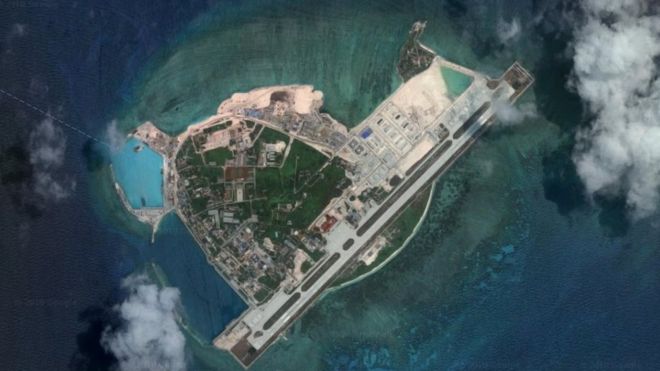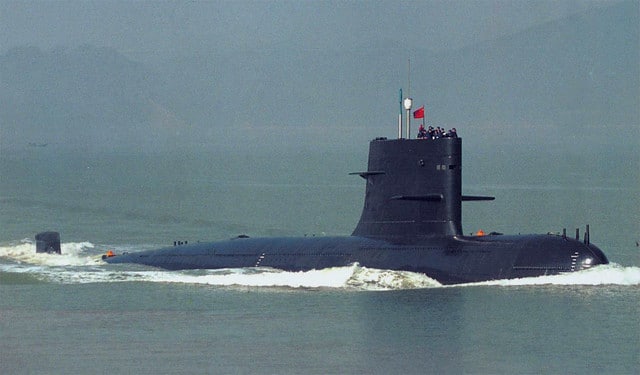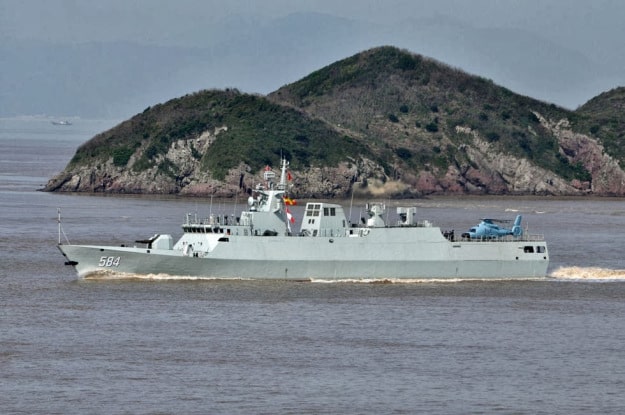Through the voice of its Minister of Defense, Wei Fenghe, the Chinese authorities have drawn the lines that must not be crossed because they could lead to a military response synonymous with war. A break in tone with Chinese diplomatic tradition, accustomed to handling vagueness so as not to find oneself in the logic of a mechanical engagement.
The Chinese Minister of Defense took advantage of the Shangri-La meetings, dedicated to Defense in the Indo-Pacific zone, to inform his counterparts, and especially in the United States, what Beijing's policy would henceforth be regarding two issues key areas, namely the China Sea, and the island of Taiwan.
For almost 30 years, the People's Republic of China has claimed possession of the China Sea, on historical bases, claims represented by the "9-line rule". For Beijing, in addition to the economic interest represented by this area, where deposits of raw materials have been located, its full control represents a strategic asset for the deployment of its strategic nuclear submarines, which could evolve under the cover of the fleet and surface and naval aviation of the PLA. In addition, this allows the country to have a strong influence on international trade, with more than 10.000 commercial vessels passing through it each year. In order to strengthen this control, the PLA has deployed artificial military bases on several atolls in this area, sometimes very well defended by batteries of anti-ship and surface-to-air missiles, and airstrips to accommodate planes and helicopters. .
This deployment took place, on the other hand, despite international law, and to the detriment of other riparian countries which themselves have historical and economic links with this area. Western countries, behind the US Navy, have made a habit of deploying combat vessels in the zone, so as to show Beijing that, from an international point of view, these zones are not under Chinese supervision. As such, the French and European Naval Air Group organized around the PAN Charles de Gaulle, currently in the Pacific, intends not to comply with Chinese requirements for prior request to enter the area, as underlined the Minister of Defense Florence Parly during his last hearing by the Defense Committee of the National Assembly.
It is precisely these incursions, considered as provocations by Beijing, which will now give rise to increasingly firm responses from Chinese naval and air forces. And Wei Fenghe clarified that the risk, during such meetings, would be to create military incidents that could develop into a casus belli, which, according to him, the Chinese authorities are ready for.

If the Chinese minister suggested a certain progressiveness in the responses to Western incursions in the China Sea, the same is not true regarding Taiwan, on the subject of which the dBeijing’s course is becoming more radical more and more firmly. According to Wei Fenghe, any form of military assistance to the independent island will henceforth be considered an act of support for sedition, and will result in an extremely firm response, adding on several occasions that China was ready for war to defend what it considers its territorial integrity. However, Beijing is not unaware that Washington has undertaken the modernization of the Taiwanese F16 fleet, and promised assistance for the construction of new attack submarines, as well as the sale of new combat aircraft.
Regardless, it is remarkable to note the number of times the hypothesis of a war was put forward in the speech of the Chinese minister, a subject which is visibly becoming more and more concrete for the country's authorities. China seems to have gone beyond its diplomatic-commercial approach that it used for nearly 30 years, to rely on a position of military firmness, revealing a growing and now sufficient confidence in its armed forces to neutralize and possibly defeat a opponent, even if he was American.

However, the PLA is not today capable of defeating American forces in a global conflict, being overwhelmed in almost all areas. But the Chinese authorities only seem to be considering, at least today, a form of limited conflict, close to its coasts. And in this area, it has, in fact, very significant arguments to put forward to neutralize the naval and air power of the United States and its allies in the Pacific, such as a significant number of submarines, almost around a hundred modern corvettes and frigates with advanced anti-submarine and anti-ship capabilities, an imposing maritime patrol fleet, as well as large numbers of bombers and anti-ship ballistic missiles, not to mention a defense organization dedicated to efficient access denial.
In other words, under these conditions, the PLA would be able to mobilize all of its forces, while the United States and its allies could only deploy part of their means, creating a balance of power considered favorable to its forces by Beijing. We must not forget, either, that in the next 5 years, the Chinese armed forces will continue to modernize at a rapid pace. The Navy should receive, by 2025, at least 2 new aircraft carriers equipped with catapults and Type 003 arresting lines, 3 Type 075 assault helicopter carriers, more than 25 destroyers, at least half of which are heavy Type 055s. , as many type 054B frigates, and around fifteen submarines of different types, as well as a very large number of planes and helicopters. The air forces are not left out, receiving more than 70 new combat aircraft each year. In summary, the balance of power in favor of Chinese forces, within a radius of 2000 km around its coasts, will not decrease in the coming years, on the contrary.

Although the subject was only quickly addressed by the Chinese Minister of Defense, this rhetoric of conflict echoes the growing economic tensions between Washington and Beijing, the subject being on the other hand frequently addressed by the Chinese media, and in particular the media of state, with, here again, the use of arms which is presented as a possibility in the face of “American intransigence”.
It appears more obviously that the coming decades will be the scene of a confrontation between the United States and China to establish their respective sovereignties, without necessarily leading to a direct conflict between the great powers. For us, Europeans, such a drift would expose the continent to several risks, with on the one hand the very significant exposure of our economies to international trade and a massive dependence on Chinese consumer goods and investments, but also, by focusing resources of US Defense in the Pacific, to an over-exposure of the European Union to Russia, but also to other emerging players, such as Turkey, or the Sunni Alliance. In any case, it is more than time for European countries to agree to look lucidly at this probable future, and to adapt internal, economic and external policies, as well as defense investments, to this risk.
With Europe still representing 50% of Russia's trade, compared to less than 20% with China, perhaps there is still time to try to bring Moscow back towards a European alliance, rather than comforting the Kremlin in its shift. Asian?
